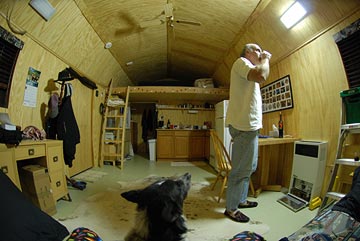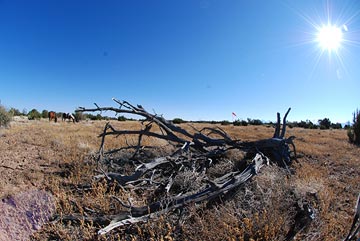The FARs in a way an intelligent person can understand them. Maybe.
I was down at Williams-Gateway Airport (IWA) in Chandler the other day. They’ve got a great pilot shop there with lots of books, charts, and real-life pilot supplies. I’d venture to say that it’s one of the best pilot shops in the Phoenix area.
(Side note here. If you’re a Phoenix area pilot looking for a destination for a quick flight, try Willie. The controllers are friendly, there’s plenty of parking, and there’s both a restaurant with excellent breakfast and a pilot shop to give you an excuse for the flight.)
Among the books on the shelves was a series by Jeppesen titled Federal Aviation Regulations Explained. Ah, I thought to myself. Could this actually be a successful attempt to explain the legalese text of the FARs?
Now I don’t really like Jeppesen as a company because of the restrictions it places on suppliers. For example, when I ran an FBO some years ago, none of my pilot supply providers were able to become Jeppesen dealers, so I could not carry Jeppesen products. (Fortunately, ASA products are just as good and I had no trouble getting them.) But I do admit that Jeppesen has products that no one else carries and that their products, in general, are good. It certainly wasn’t worth turning my nose up at Jeppesen and missing out on a good book.
There were three versions of the book, each tackling a different group of FAR parts. One fat book, mostly for private pilots, covered Part 1, 61, 91, 141 and NTSB 830. A slightly slimmer book, mostly for commercial pilots, covered Part 1, 119 and 135. Another book, mostly for mechanics (I think), covered Part 1, 21, 43, 65, 145 and 147.
 Although I would have purchased the first two books mentioned here, the price tag on the first book ($35.95, I think) was a little rich for my blood — especially since I hadn’t actually read any book in the series. I decided to try the series with the volume that I needed most: the one that included coverage of Parts 119 and 135. (My helicopter charter business operates under Part 135.) The cover of the book I bought is different from the one shown here; I think (hope) I bought the latest edition, dated 2005.
Although I would have purchased the first two books mentioned here, the price tag on the first book ($35.95, I think) was a little rich for my blood — especially since I hadn’t actually read any book in the series. I decided to try the series with the volume that I needed most: the one that included coverage of Parts 119 and 135. (My helicopter charter business operates under Part 135.) The cover of the book I bought is different from the one shown here; I think (hope) I bought the latest edition, dated 2005.
Now I don’t want you to think I don’t understand the FARs I’m supposed be be operating under. I do. Mostly. Every once in a while, I stumble upon a rule that I’m not quite sure of. I usually call other pilot friends or sometimes the FAA to get an interpretation. I know enough about the FARs to operate safely and legally and stay out of trouble, although I fully admit that I make no effort to understand the rules that don’t apply to my operation (i.e., rules covering cockpit recording devices, beverage carts, autopilots, and multi-pilot operations). After all, there’s only so much information that can fit into my brain. I’d rather fill it with the information that matters.
Aviation Law 101
I jumped into the book during breakfast at Willie’s Flight Line Cafe restaurant. I basically opened to a random page, paged around until I found a topic that interested me, and started reading. I was immediately reminded of my Business Law 101/102 text book back in college — a big, black volume that stated laws, interpretations, and cases.
So, for example, Page 42 begins a discussion of FAR Part 135.79, which covers Flight Locating Requirements. This applies to my operation, since I’m required to have procedures to help rescuers find me if I make an unscheduled landing and get stuck somewhere — or crash, which I prefer not to think too much about.
First, the book provides the complete text of the paragraph and all of its sub paragraphs. This is the same information you can get in any FAR book or on the FAA’s Web site.
Next, it provides a plain English Explanation of the rule with a few examples of how it might apply.
Then it lists some Cross References to other FARs, the Aeronautical Information Manual (AIM), and Advisory Circulars.
Finally, it lists some Chief Counsel Opinions related to the rule. This is how the rule has been interpreted when challenged in court or other proceedings.
This particular example is pretty straightforward. Other parts are more complex. For those, the book also includes Preamble information and case excerpts associated with the rule. This, when combined with lengthy Chief Counsel Option excerpts, can go on for pages.
I find the case studies and opinion excerpts the most enlightening when dealing with a complex rule. They clearly explain how a pilot did (or did not) get into trouble for doing something (or not doing something) related to the rule and why the situation was (or was not) an issue. At breakfast the other day, I was completely absorbed in the Part 135 applicability regulations, which illustrated how pilots got in trouble for operating Part 135 flights when they weren’t certified for Part 135 operations. It made me very glad I had my Part 135 certificate.
A Good Addition to Any Serious Pilot’s Bookshelf
In all, I highly recommend these books to anyone who is serious about a career in aviation. Written by aviation lawyers, they are equivalent to the business law books I had to read to get my BBA years ago. They tell it like it is and help you understand the rules in a way that a simple reading of the FARs cannot. The next time I’m at Willie, I’ll pick up the first book in the series for my reference library.
You can learn more about the books on Jeppesen’s Web site.


 Although I would have purchased the first two books mentioned here, the price tag on the first book ($35.95, I think) was a little rich for my blood — especially since I hadn’t actually read any book in the series. I decided to try the series with the volume that I needed most: the one that included coverage of Parts 119 and 135. (My helicopter charter business operates under Part 135.) The cover of the book I bought is different from the one shown here; I think (hope) I bought the latest edition, dated 2005.
Although I would have purchased the first two books mentioned here, the price tag on the first book ($35.95, I think) was a little rich for my blood — especially since I hadn’t actually read any book in the series. I decided to try the series with the volume that I needed most: the one that included coverage of Parts 119 and 135. (My helicopter charter business operates under Part 135.) The cover of the book I bought is different from the one shown here; I think (hope) I bought the latest edition, dated 2005. So when I tried it in the shed last night, I turned the flash off. I held the camera steady for the 1/4 second shutter speed that captured this image, which shows my husband, Mike, taking a quick drink before trying to fix the furnace. In the lower part of the photo, you can see my knees (clad in my wild chili pepper pants) and the sofa I sat on. Jack the Dog was sitting between my legs, watching Mike. The shot shows 90% of the shed’s main room.
So when I tried it in the shed last night, I turned the flash off. I held the camera steady for the 1/4 second shutter speed that captured this image, which shows my husband, Mike, taking a quick drink before trying to fix the furnace. In the lower part of the photo, you can see my knees (clad in my wild chili pepper pants) and the sofa I sat on. Jack the Dog was sitting between my legs, watching Mike. The shot shows 90% of the shed’s main room. I brought out two apple pieces, which was a bad idea. As soon as they realized I had food, they wouldn’t leave me alone. They kept nosing my camera bag and shirt and it was all I could do to keep the camera out of their reach. But finally they realized that I wasn’t an apple tree and left me alone. Then it got tough to photograph them. They wouldn’t stand still. I managed to capture this shot of Jake with Cherokee in the background.
I brought out two apple pieces, which was a bad idea. As soon as they realized I had food, they wouldn’t leave me alone. They kept nosing my camera bag and shirt and it was all I could do to keep the camera out of their reach. But finally they realized that I wasn’t an apple tree and left me alone. Then it got tough to photograph them. They wouldn’t stand still. I managed to capture this shot of Jake with Cherokee in the background. This first shot was taken from about 2 feet from one end of the log. There’s not much curvature at all. And yes, that’s the sun. With the fisheye lens, it’s hard to keep the sun out of photos.
This first shot was taken from about 2 feet from one end of the log. There’s not much curvature at all. And yes, that’s the sun. With the fisheye lens, it’s hard to keep the sun out of photos. This second shot was taken about a foot and a half from the middle of the log. It’s a bad exposure; I’m not quite sure what I did wrong here. Still not much curvature.
This second shot was taken about a foot and a half from the middle of the log. It’s a bad exposure; I’m not quite sure what I did wrong here. Still not much curvature. This third shot was taken 6 to 12 inches from the end of the log. I focused on the log, but because there was so much light, there’s a decent amount of depth of field. You can really see the curvature of the horizon, but can still clearly identify the horses and windsock.
This third shot was taken 6 to 12 inches from the end of the log. I focused on the log, but because there was so much light, there’s a decent amount of depth of field. You can really see the curvature of the horizon, but can still clearly identify the horses and windsock.